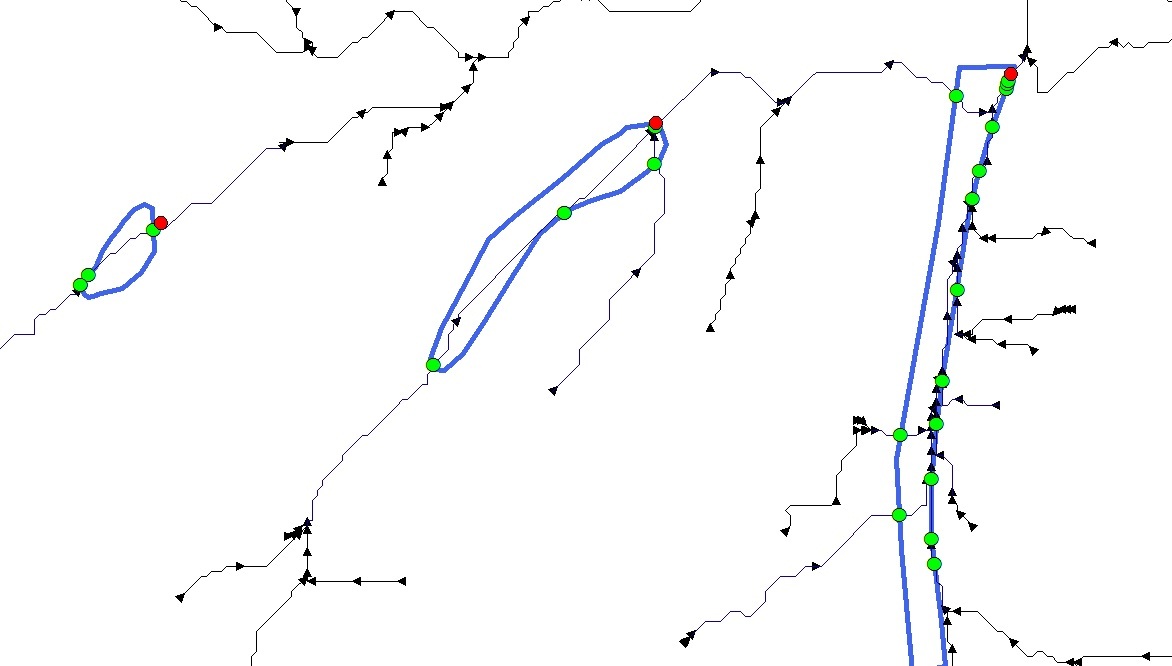
Hi All, I have a overland flow network and some polygons. I need to create a point at any location where the flow network exits the polygon (red dots, manually created). See attached. I can create all nodes via the line on polygon overlayer. (green dots) Then i tried filtering by fme_node_direction but it didn't return the expected results. Any suggestions or do i need to delve into the M values of the lines to establish the points i need. Thanks Steve








